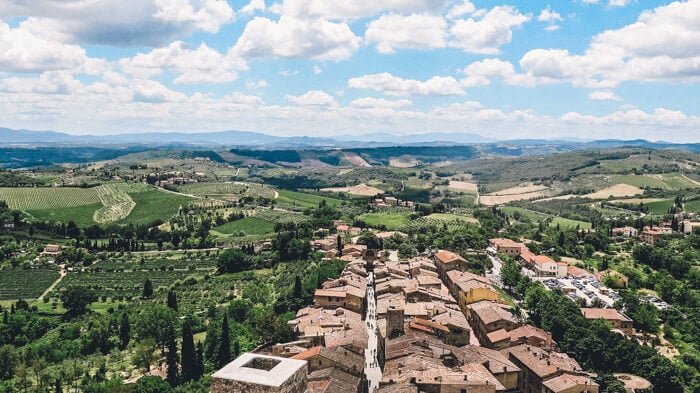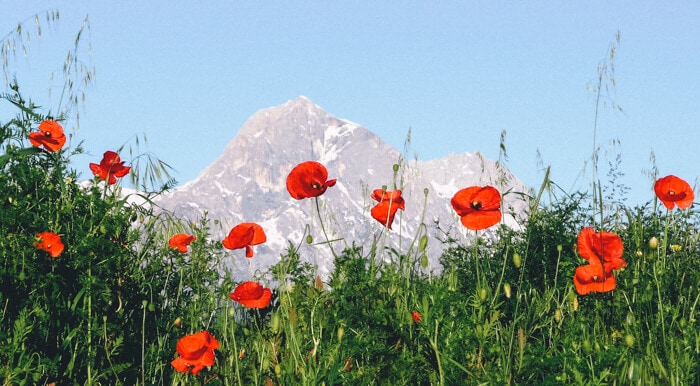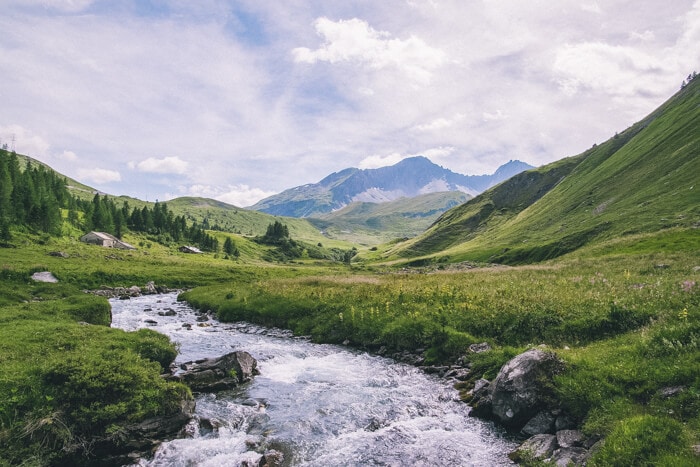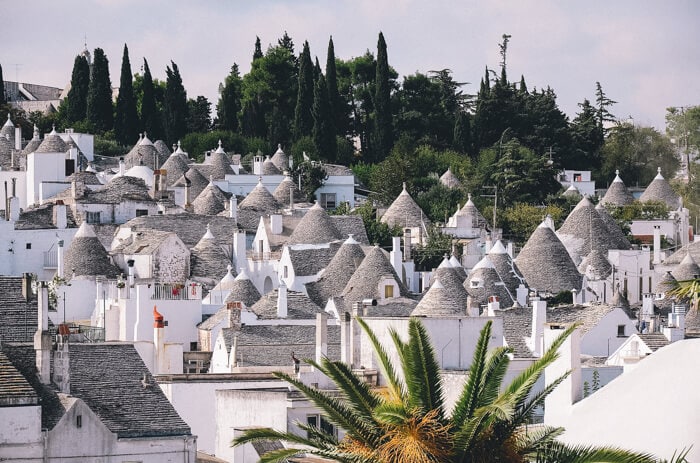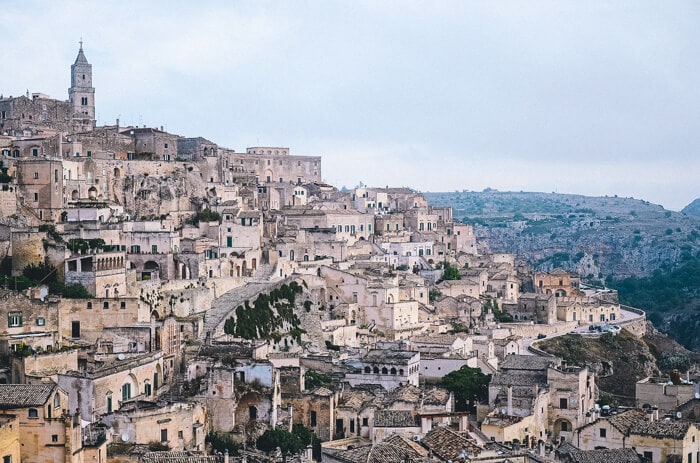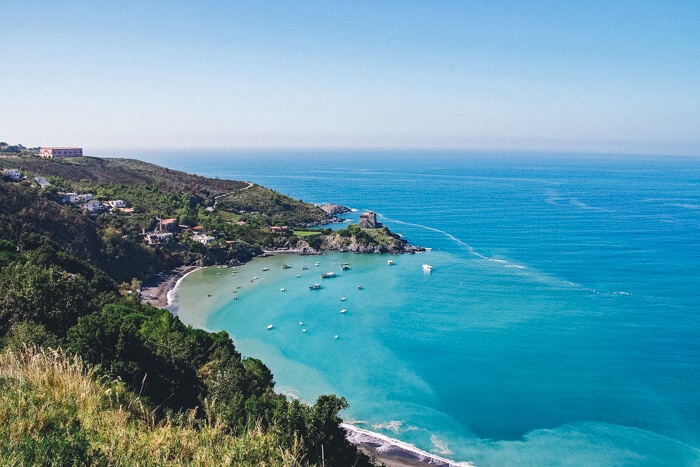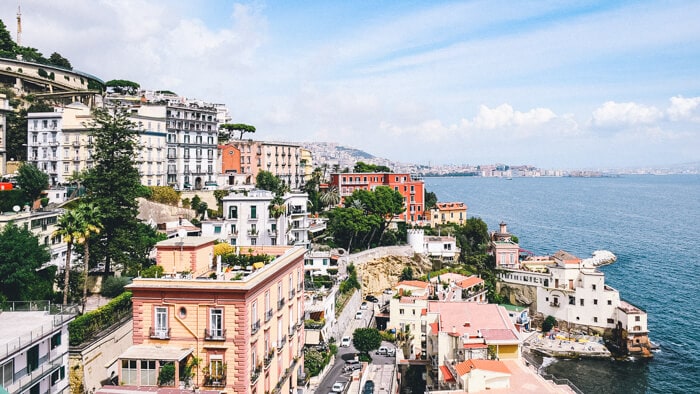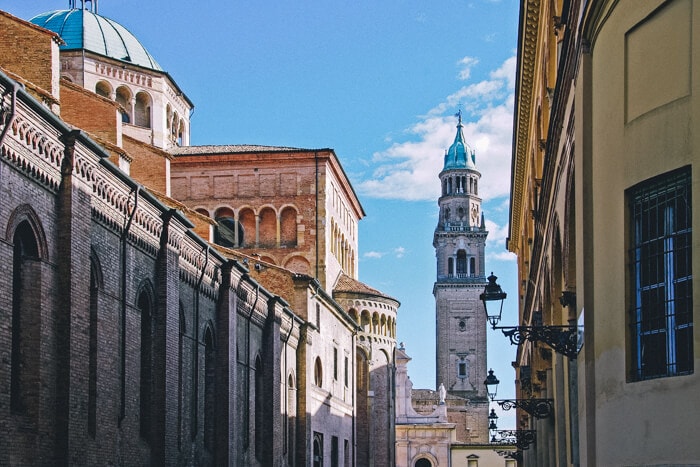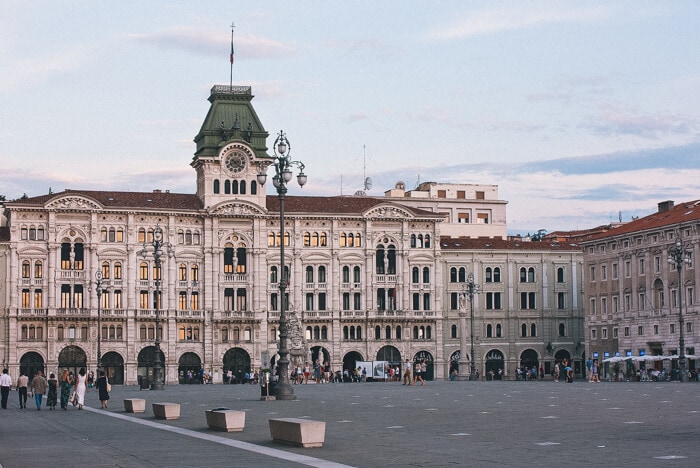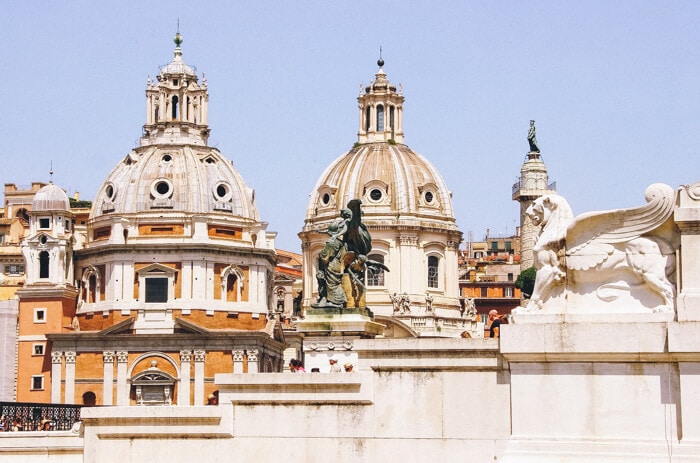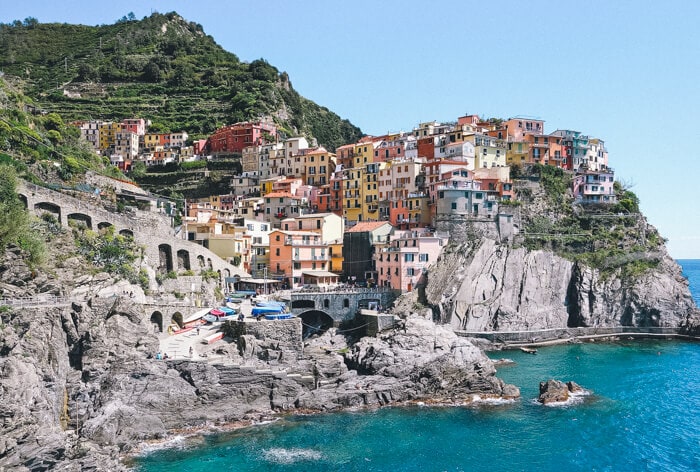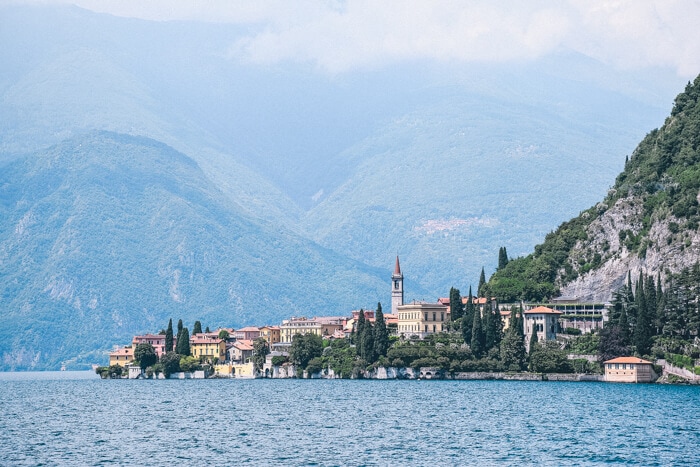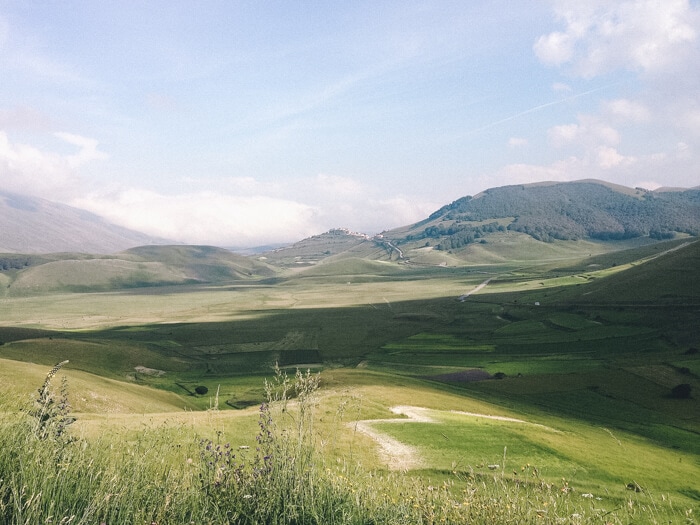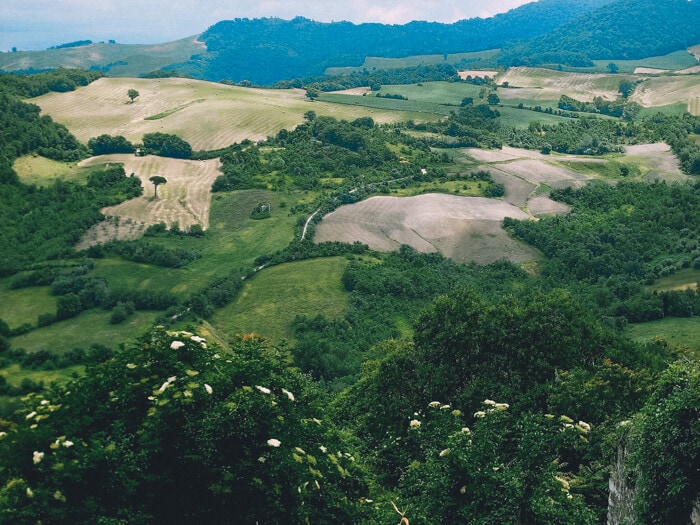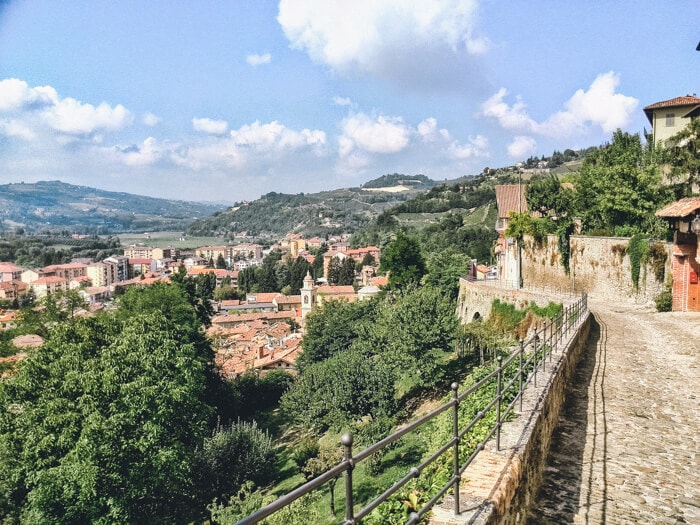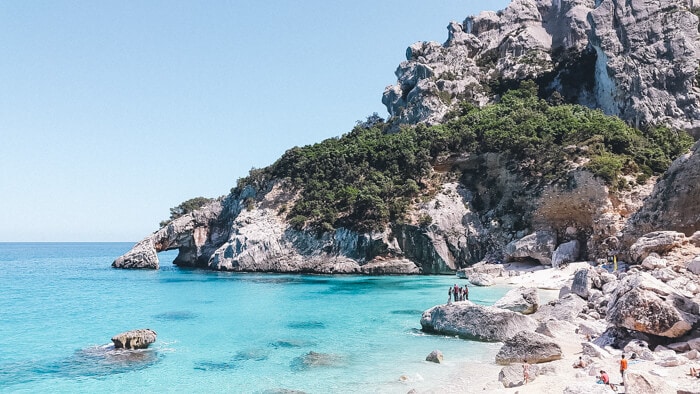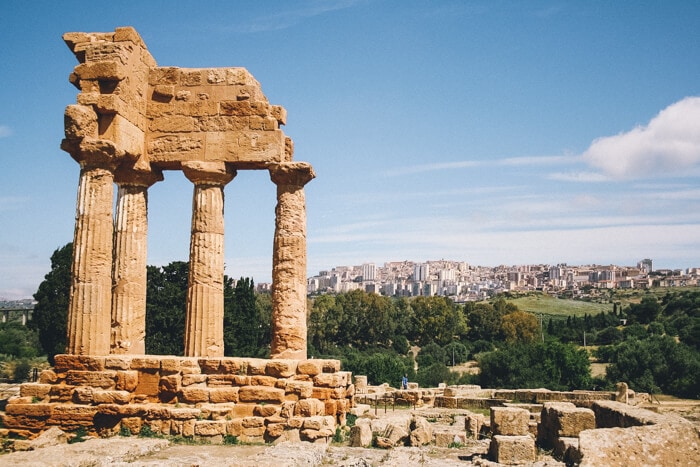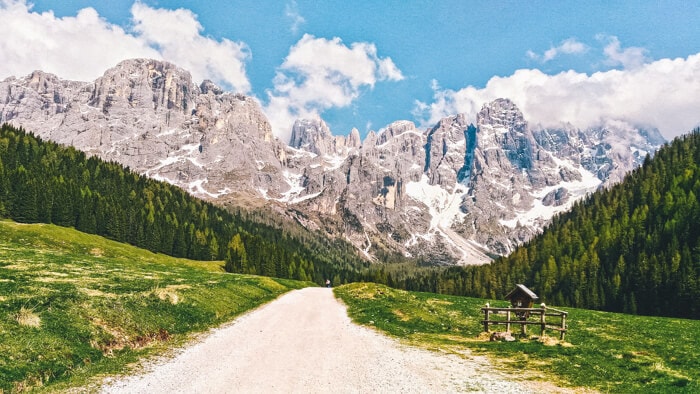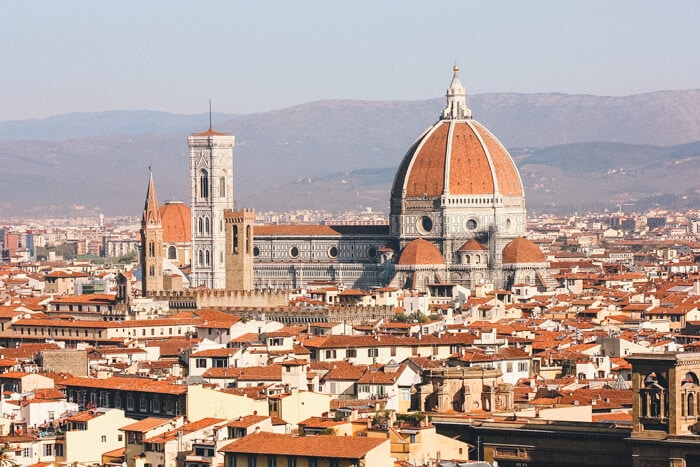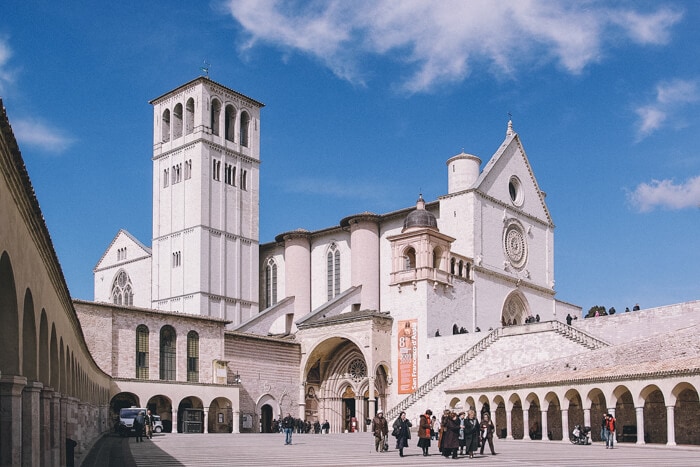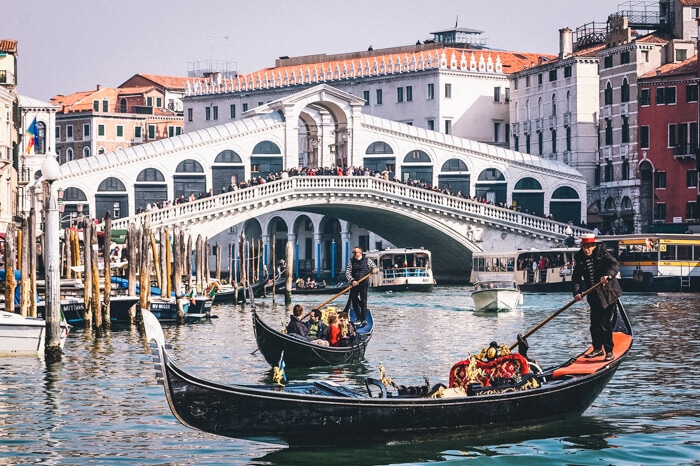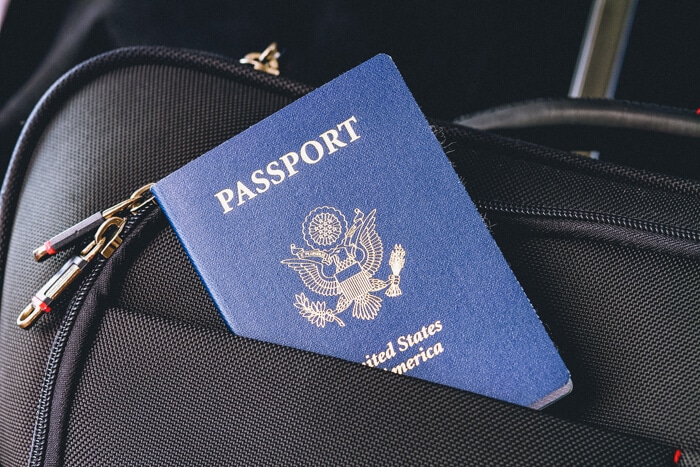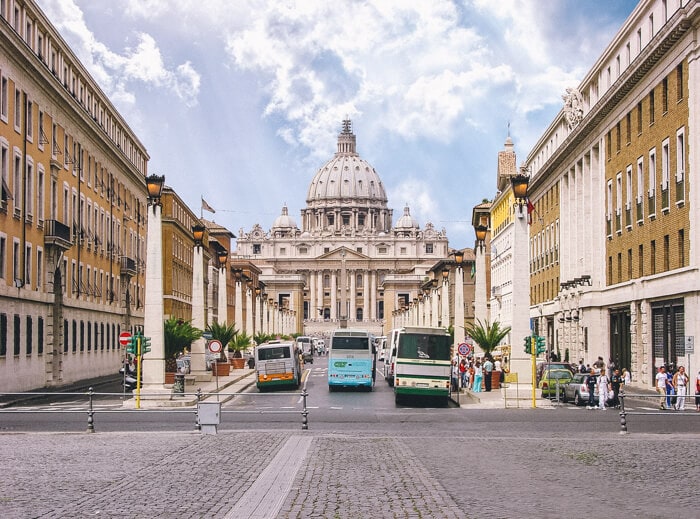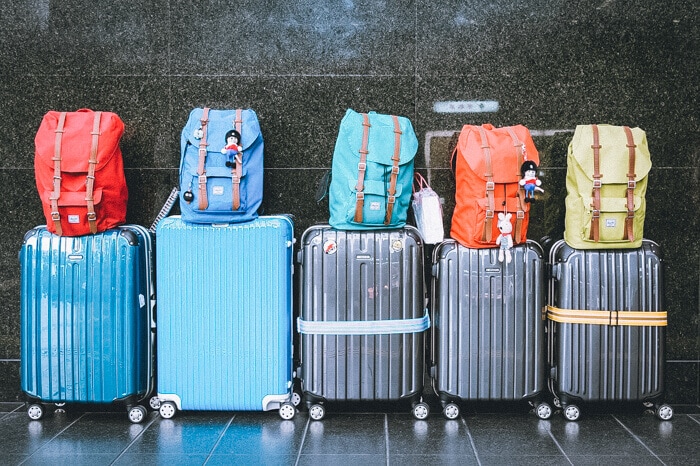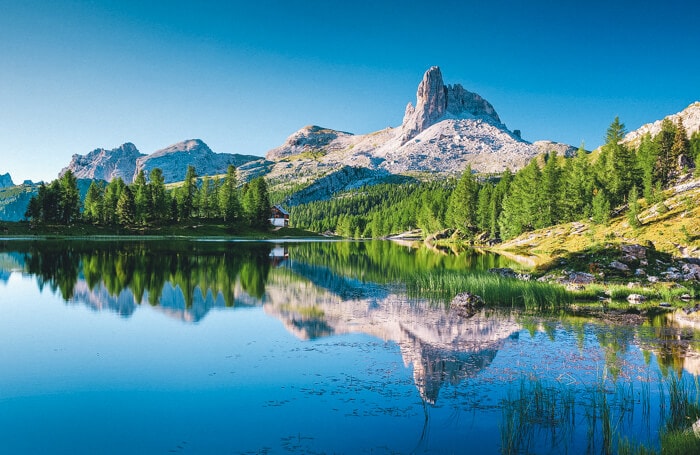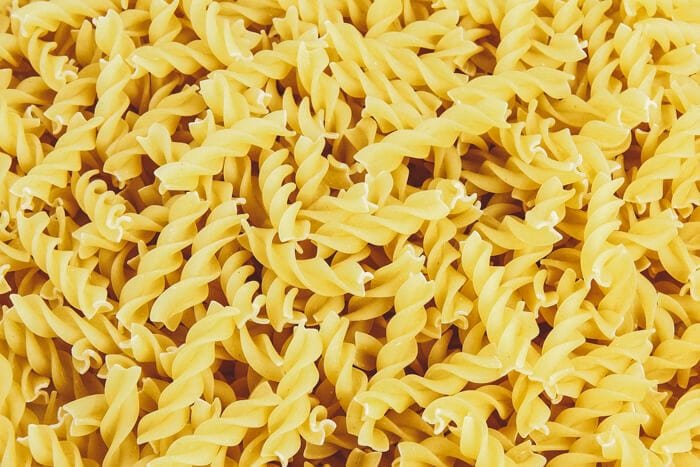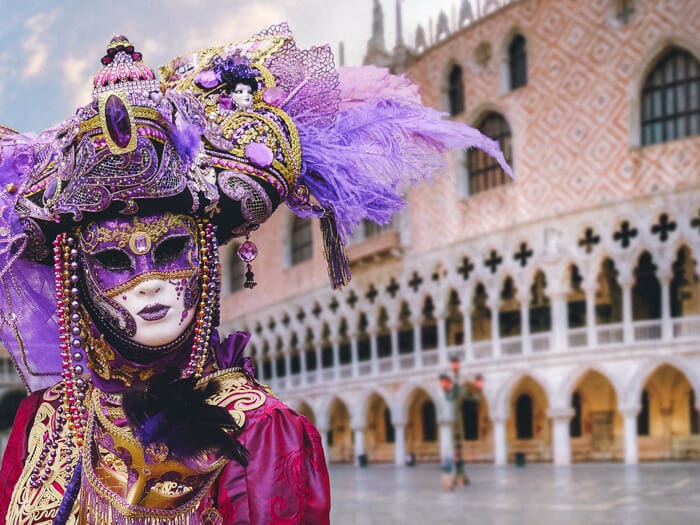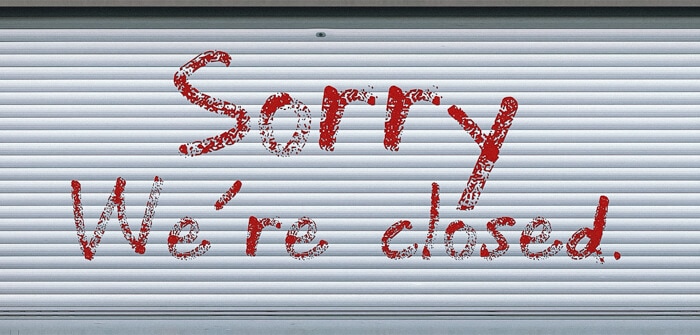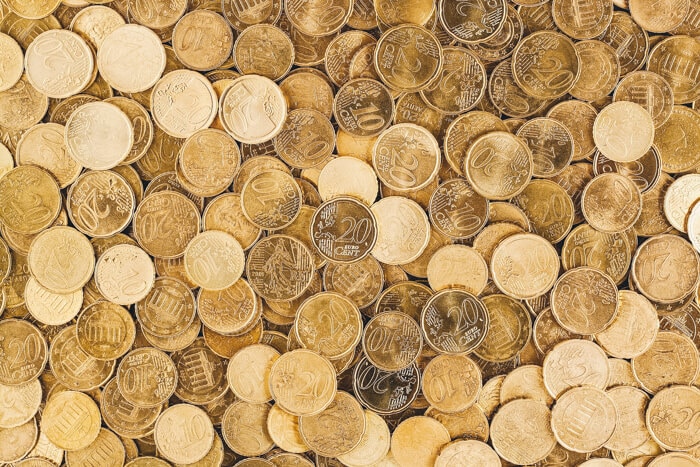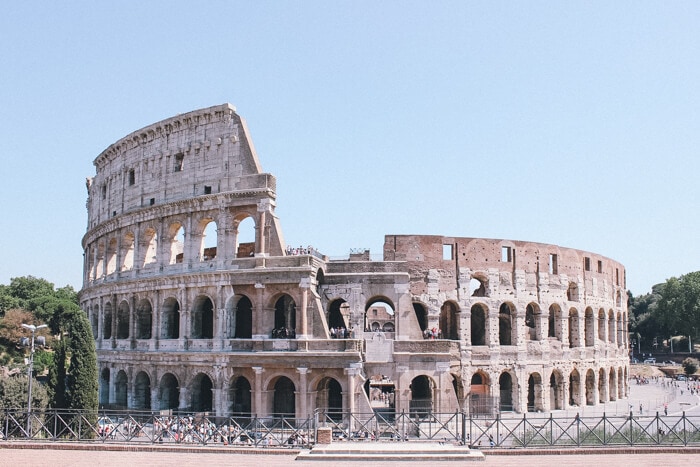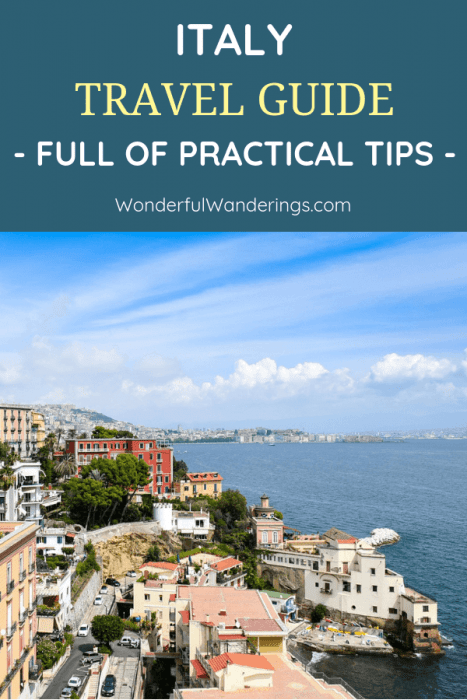Planning a trip to Italy? Great! This Italy travel guide is full of tips and advice to help you do just that.
Italy is an EU member state situated in southern Europe. It’s the country that looks like a boot jutting out of the bottom of Europe! Italy encompasses the entirety of this boot-shaped peninsula, along with several islands, the largest of which are Sardinia and Sicily. Italy was one of the founding members of NATO and is an OECD member country.
So, why travel to Italy? The country is a world-renowned tourist destination. It’s often referred to as the cradle of civilization and boasts hundreds of museums, galleries, and monuments that will offer you a glimpse at the country’s fascinating cultural heritage. It’s also famous for its beaches, iconic coastal towns, pretty hillside towns, and delicious cuisine – renowned as the birthplace of pizza and pasta.
Contents
- Italy travel guide: quick facts
- Italy’s Regions
- How to travel to Italy
- How to travel around Italy
- Best places to stay in Italy
- What to pack for Italy
- When to travel to Italy
- What to eat in Italy
- Famous events in Italy
- Bank holidays in Italy
- Don’t forget travel insurance
- Basic phrases and their pronunciation
- Safety in Italy
- The use of cash and cards in Italy
- Calling abroad, WiFi and data use in Italy
- Tipping in Italy
- A brief history of Italy
Italy travel guide: quick facts
Where is Italy? In between Austria, San Marino, Vatican City, Slovenia, Switzerland, and France
Size: 301,338 km2 or 116,347 sq mi
People living there: more than 60,782,000
Capital: Rome
Governmental structure: Constitutional, parliamentary republic
National day: June 2
Time zone: Central European Time + UTC+1 / GMT+1
Currency: euro (EUR)
Power voltage and socket type(s): 230V, plug types F and L. If these don’t match with your devices, make sure to bring a universal adapter.
Official religion(s)/Freedom of religion: Freedom of religion. 80% of Italians are registered as Christian, with 70% being Catholic followed by other Christian denominations. 12% of Italians are not religious. Less than five percent of citizens are Muslim, Jewish, Buddhist, and Hindu.
Official language(s) and general knowledge of English: Italian is the official language. English is semi-widely spoken in the northern part of Italy, infrequently spoken in southern Italy.
Drives on this side: Right
International driver’s licence accepted? Yes
Phone code: +39
Looking for less dry, more fun facts about Italy? You’ll find a whole list here.
Italy’s Regions
Abruzzo
Abruzzo is on the east side of the peninsula and the regional capital is L’Aquila. It is one of the most sparsely populated regions in Italy, which makes it ideal for immersing yourself in nature. In Abruzzo, rugged mountains loom over tiny, traditional villages, many of which bear traces of medieval times.
What Abruzzo lacks in people, it more than makes up for in natural beauty. The Gran Sasso d’Italia is a popular spot for skiing in the winter and hiking in the summer. Once you’ve had your fill of slopes and valleys, a sandy coastline is just a stone’s throw away.
Aosta Valley
In the northwesternmost corner of Italy is the Aosta Valley. This region is nestled in the Alps and bordered by France and Switzerland. While this part of the country is known for its world-class skiing, visitors pour in year-round and take advantage of the numerous hiking routes in the summer. Courmayeur and Breuil-Cervinia are among the most popular ski resorts.
The Aosta Valley is a hub for thrill seekers thanks to the abundance of adventure activities on offer. However, that isn’t all the region is good for. Medieval castles pepper the landscape in the Aosta Valley and there are several top quality spas dotted around too.
Apulia
Also known as Puglia, Apulia takes up the “heel” of the boot. The capital city of the region is Bari, which is packed with bars and restaurants and has a dazzling seaside promenade. The town of Trulli is a common stop with travelers due to its numerous white-washed huts with brick dome roofs. No-one is entirely sure where this building style comes from, which makes it even more intriguing and one of the things to see in Italy.
History buffs should take the opportunity whilst in Apulia to visit the Castel del Monte. This magnificent, octagonal castle was originally built in 1240 and has been extensively restored over the centuries.
Basilicata
Wedged between Apulia and Calabria, Basilicata is situated in southern Italy. Upon arrival, your first port of call should be Matera. This gorgeous hilltop town features quaint, stone houses, which line narrow, winding streets, and is a UNESCO World Heritage site. Potenza, the capital of the region, is also fabulously beautiful and deserving of a visit.
Basilicata is also home to the largest national park in Italy: the Pollino National Park. Here you will find caves that date back to prehistoric times, natural hot springs, and hiking paths.
Calabria
You’ll find Calabria down in the toe of the Italian boot with the Ionian Sea on its eastern side and the Mediterranean Sea to its west. Highlights of this region include the Aspromonte National Park, the stunning Falcomatà promenade, and the magnificent Corigliano Castle and museum. There’s no end to the cultural excursions on offer here.
Chianalea di Scilla is always a favorite with visitors thanks to its virtually unrivaled beauty. Here, traditional houses sit one atop the other, built into the side of the cliff. Below, shimmering water gleams under never-ending sunshine. It makes for a perfect day trip!
Campania
You might not have heard of Campania, the region, but you will certainly have heard of its capital city: Naples (or Napoli in Italian). The birthplace of pizza, Naples has long been a getaway spot for Italians and internationals seeking sunshine and adventure.
For those looking to stay active during their vacation, a brisk hike up the iconic Mount Vesuvius to see its crater should do the trick. If you’d rather chill out, head over to the star-studded Amalfi Coast for beautiful beaches and elegant boutiques. The Amalfi Coast is famous for it’s picturesque hilltop villages and stunning sea views.
Emilia-Romagna
Italy is renowned for its world-class culinary scene, but few regions do it quite like Emilia-Romagna – particularly its capital Bologna. It’s one of the major cities to visit in Italy and a must for foodies. You can read about the food tour I did in Bologna here. There are also food markets all over the city and a number of tours that will guide you through them and point out local favorites.
Friuli-Venezia Giulia
In the northeasternmost corner of Italy, bordering Austria and Slovenia, lies Friuli-Venezia Giulia. In Gorizia, you can even stand with one foot in Italy and with the other in Slovenia.
Trieste is the capital city of this gorgeous, mountainous region. Emerald slopes roll out in every direction and the mish-mash of cultures here never fails to fascinate. It’s no wonder writers like Joyce and Hemingway found so much inspiration here. This region is one of the least visited in the country, meaning you’ll virtually have the place to yourself if you choose to go. Enjoy wine-tasting tours, long hikes through the countryside, the ancient ruins of the Roman Empire at Aquileia and the beach in Grado.
Lazio
Lazio is home to Italy’s world-famous capital city, Rome. The cradle of civilization, this ancient city is filled to the brim with history and culture. From the Colosseum to the Trevi fountain, there are iconic landmarks on every street of Rome. Plus, there’s lots of great food to be found. It’s not a surprise that it’s the most popular of all tourist destinations in Italy.
Read here how to spend 4 days in Italy’s capital.
While technically its own country, Vatican City is one of the highlights of a trip to Rome. Marvel at the astonishing architecture of the Sistine Chapel and St. Peter’s Basilica. Whether you are Christian or not, a trip to the Vatican is a must – even if it’s just to say you’ve been to the world’s smallest country!
Liguria
Liguria is a small, crescent-shaped region in the North of Italy. It joins up with Monaco and forms part of the Italian Riviera. Highlight and most popular destination of the region is Cinque Terre, a stretch along the coast made up of five tiny colorful towns built against the cliffs.
In the capital of the region, Genoa, the Piazza de Ferrari and the Piazza Matteotti are favorites with visitors. You’ll be able to do some excellent people watching there. If you’re looking for a spot of history, check out the castle, cathedral, or hillside fort.
Lombardy
Lombardy offers the perfect combination of city and nature for those who want a bit of both on their holiday. The capital of the region is Milan, one of the fashion capitals of the world and home to the beautiful Duomo cathedral. Although Milan is not the most beautiful city in Italy, it has an undeniable cosmopolitan buzz that enchants those who visit.
On the nature side of things, Lombardy boasts the breath-taking Lake Como and Lake Garda. The shores of the lake are noticeably less crowded than the beaches in the South and the scenery is utterly sublime.
Le Marche
Bordered by the Adriatic Sea on one side and the Apennine Mountains on the other, Le Marche is a picturesque region that has Ancona as its capital. This region is less touristy than many others in Italy and as a result, it has retained a very distinct authenticity. You will find plenty of family-run cafes and farmhouse guesthouses here.
When it comes to natural beauty in the region, Mount Conero steals the show. From the glittering coast line, it rises up in shades of vivid green and makes the perfect destination for hiking and picnicking.
Molise
Just south of the center of Italy is the region of Molise. You would be forgiven for never having heard of it or its capital Campobasso, but there are lots of reasons why you should now become acquainted with them. In Monti del Matese there is excellent skiing in the winter and hiking in the summer. There are also plenty of historical sites and ruins to explore if you’re in need of a history fix.
Piedmont
The first thing you will notice about Piedmont is its remarkable scenery. Endless fields of green stretch out to meet the snow-capped peaks of the Alps that line the horizon. After that, you will fall in love with its charming towns and cities. Highlights of the region include Lake Maggiore, the National Cinema Museum, and the hilltop Basilica of Superga.
If you’re a football fan, you might want to grab tickets to watch Turin’s team Juventus play a match. Juventus is the oldest and most successful team in Italy so it’s worth watching a game even if you’re not that keen on football.
Sardinia
In the Mediterranean Sea, to the west of the Italian peninsula, is the island of Sardinia. The island has long been a holiday haunt for people around the world thanks to its fabulous beaches and natural beauty. It’s one of the best holiday spots in Italy if you just want to relax.
Aside from the beaches, Sardinia also has a few interesting sights. Along the coast, there are the Caves of Neptune and away from the coastline, Sardinia has a collection of quaint and colorful towns and around 7,000 “nuraghe”, towers from the Bronze Age. Cagliari is the capital.
Sicily
If you find Sicily on the map it looks like it is being kicked by the boot of Italy. The island is best known for being the home to Mount Etna, one of the world’s most active volcanoes – but don’t let that put you off hiking up to the top.
Elsewhere on the island is the Monastery of San Nicolò, which dates back to the 1500s. Of course, when the sun is shining the best place to be is Rabbit Beach or in a kayak exploring the Aeolian Islands, an archipelago of rocky islands to the north of Sicily.
Trentino Alto Adige
Bordering Switzerland and Austria, the Trentino Alto Adige region is among the most beautiful in the whole country. Fresh, alpine beauty is plentiful and a drive or cycle along the Stelvio Pass is an excellent way to drink it all in. Turquoise lakes and verdant slopes are just a tiny part of what makes this region so gorgeous. History lovers can also take advantage of the numerous medieval castles scattered around the region.
Tuscany
Tuscany is the proud home of one of the world’s most phenomenally beautiful cities: Florence. Art lovers flock from far and wide to ogle the world-class architecture and art that can be found throughout the city. From the Florence Cathedral to the Uffizi Gallery, there is no end to the wonder and beauty on offer here.
Outside of Florence, vineyards and olive groves stretch out endlessly across Tuscany’s rolling hills. Tuscan wine is a must try and the region is also home to the country’s most internationally recognized landmark: the leaning tower of Pisa.
Umbria
Umbria’s capital city Perugia has all the charm you would expect from a hilltop spot with Roman, Etruscan, and Medieval influences. The Palazzo dei Priori lies in the city’s center and dates back to the early 1300s. There is even more medieval magnificence to be found in Assisi, which sits on the slopes of Monte Subasio, and Montefalco makes for a great base to explore the region as well.
If you’re into beautiful hill towns, Umbria is a must.
Veneto
Last, but certainly not least, we come to Veneto. Perhaps one of the best-known cities in the world, the region’s capital, Venice, brings in millions of visitors every year. The Grand canal and smaller canals that carve through the city are dotted with elegant gondolas and the streets are lined with cafés and gelaterias (ice cream shops). The main square Piazza San Marco is famous around the world. It’s definitely one of the best places to visit in Northern Italy for many people. Too many people even, as overtourism has become a real problem in Venice.
Luckily, there is more the Veneto than just Venice. Verona and Padova get a lot less visitors to process but are no less fabulous to explore. Whether you visit the famous balcony that inspired Shakespeare’s Romeo and Juliet in Verona or hit up the boutiques in Padova, you are guaranteed an incredible trip.
How to travel to Italy
Entry requirements
Italy is in the Schengen Zone and can be entered freely from other Schengen Zone countries. Citizens of EU countries that are not in the Schengen Zone may still enter freely but may need to show their passport or ID on arrival.
Citizens of the US and the rest of the world may enter Italy for 90 days without a visa.
Transportation
By bus
Italy is very well connected by bus to its neighboring countries and beyond. There are a number of buses that travel to Italy from, among other countries, Portugal, France, Spain, Germany, Austria, Luxembourg, Belgium, the Netherlands, Slovenia, and Croatia. Some of the long distance bus companies riding into Italy are:
- Eurolines
- Busabout
- Flixbus
By train
There are direct, international trains into Italy from Germany, Austria, Switzerland, and Hungary. If you’re coming from any other country, you’ll have to switch trains at some point.
Check bEurope for train options and prices.
By ferry
There are ferries to Italy from a number of Greek islands, including Corfu and Kefalonia. There are also ferries into Italy from Albania, Spain, France, Malta, Montenegro, Morocco, and Tunisia and ferries between mainland Italy and the islands of Sicily and Sardinia.
Some companies offering ferry services to Italy are:
1. Ferries in Greece: Offers ferry crossings from Greece to Ancona, Bari, Brindisi, Ravenna, and Venice.
Check their timetables and prices here.
2. Croatia Ferries: Offers ferry crossings from Croatia to Ancona, Bari, Cesenatico, Pesaro, Pescara, Trieste, and Venice.
Look here for an overview of ferry routes and prices to Italy.
By plane
Italy’s busiest international airport is the Leonardo da Vinci-Fiumicino Airport in Rome. The Malpensa and Orio al Serio airports in Milan and the Marco Polo airport in Venice also have large international terminals ut it’s also possible to fly to smaller cities like Bologna.
Check Skyscanner for a good overview of cheap flights and other options..
How to travel around Italy
Independent travel around Italy
Exploring Italy independently is delightfully easy. Trains are the best way to travel in Italy if you want to visit the bigger cities. The national rail system is run by Tren Italia and you can buy tickets for the trains directly from their website or from Loco2 and Italia Rail, which also sell national train tickets.
An Italian road trip, driving from city to city is also an option, but beware of Italian drivers. The rules of the roads were made to be broken here and inner-city driving is mission impossible if you aren’t used to the way things are done here. That being said, car rental is a great way to see Italy’s countryside regions and drive in between smaller towns. Make sure you have an international driving permit if you are visiting from outside Europe.
Money saving tip: if you want to rent a car, book it in advance. Car rental in Italy can get extremely expensive, especially if you travel during high season.
Best places to stay in Italy
Booking.com is my go-to place for booking hotels, guest houses and bed and breakfasts abroad. It has a bunch of filtering options so I can easily get a list of only the hotels that meet my criteria. If you’re looking for accommodation, I highly recommend you check there.
On the occasions that I want to book an apartment rather than a hotel, I use Airbnb.
What to pack for Italy
The weather in Italy varies drastically depending on which part of the country you visit. Sicily, Sardinia and the southern tip of Italy are warm all year round, whereas the north and central parts have more typical seasonal changes. If you are traveling to the south, you’ll only need to pack for summer no matter when you go. For anywhere else, follow the guides below.
What to pack for Italy in summer
If you’re going to Italy in summer, you need to take into account that it can get really warm. Think 40 degrees celsius on its hottest days. This is what you are going to need:
- lots and lots of suncream
- a sun hat
- sunglasses
- light clothes
- a re-usable water bottle
What to pack for Italy in winter
Winter only really happens in the north and center of the country. In Milan and Rome, it can get quite chilly – even dropping into negative numbers in extreme cases.
- lots of layers that you can add and remove as necessary
- a warm, waterproof coat
- winter boots
- a scarf, gloves, and a hat
What to pack for Italy in spring and fall
The weather in Italy during spring and fall is roughly the same. It will be warm and dry for the majority of the season. Pack light clothing with a sweater for the evenings. You might also want to take flip flops for when the sun is out and closed toe shoes as well as a jacket for rainy or colder days.
When to travel to Italy
The best time to visit Italy varies depending on what you want from your holiday. If you want hiking trails, beaches, and good weather for exploring the cities then the best time to visit Italy is either in spring or in fall (March-May, September-November), which corresponds to the shoulder season.
In the summer months, the temperature is too high for the cities to be enjoyable but is perfect for hiking in the north. Beware that the summer is high season for coastal towns and beach locations. In high season prices will be higher and you should expect huge crowds.
If you want to ski then December-February is the best time to visit.
What to eat in Italy
Italy has a potentially endless list of culinary delights, but I will keep it short and simple.
- Pasta – there are dozens of different types of pasta and even more types of sauce. Just pick whichever combo takes your fancy – you won’t be disappointed.
- Pizza – everywhere in Italy serves delicious pizza, but if you want the very best you should head down to Naples.
- Risi e bisi – rice and beans, it’s simple but delicious and comes from Veneto.
- Focaccia di recco – a thin layer of focaccia pastry with creamy cheese in the middle from Liguria.
- Arancini – deep fried balls of rice covered in breadcrumbs. Fillings vary by region and often include cheese, meat, and ragu.
- Osso buco alla Milanese – tender veal shanks with delicious marrow served with gremolata with lemon, garlic and white wine.
- Prosciutto crudo – uncooked, thinly sliced ham (it’s amazing on pizza!).
- Gelato – it’s ice cream, but it is the best ice cream you have ever had. Nocciola, stracciatella, and bacio are all popular flavours.
- Bistecca fiorentina – Steak from the meat right below the ribs. From Tuscany.
- Risotto – creamy rice with meat and/or vegetables, best from the regions of Lombardy and Piedmont.
- Truffles – luxurious and expensive, truffles are used to infuse oil and are shaved onto dishes. They mostly grow in Umbria, Tuscany, Le Marche, and Piedmont.
- Limoncello – a lemon liqueur sipped from a shot glass after a big meal to “settle the stomach”. The drink originally comes from the Amalfi Coast.
I tried quite a few of these things when I did a food tour in Rome. Read here about the food tour in Rome I went on.
Famous events in Italy
- Carnavale – there are carnival celebrations all over the country but the parties in Venice get the most attention and are world famous (February)
- Ravello Festival – musical performances, dance shows, photography exhibitions (June-August)
- The Procession of Mysteries – a religious festival representing the passions and death of Jesus in Tipani, Sicily (April)
- Labour Day – celebration of Italy’s workforce and achievements (May 1st)
- Feast of Saint Efisio – a cultural and religious festival in Sardinia that gained intensity after the devastating plague of 1652 (May 1st)
- Nameless Music Festival – Italy’s largest EDM festival near Lake Como (June)
- HOME Festival – a mixed line-up festival just east of Treviso in an airfield (August/September)
- L’ardia Di San Costantino – a horse race through Sardinia in commemoration of Constantine’s victory in the year 312 (July)
- National Day (June 2nd)
- Ferragosto – day of Assumption and major national holiday (August 15th)
- Epiphany
- Easter Monday
- April 25th – Liberation Day
- May 1st – Labour Day
- June 2nd – Republic Day
- August 15th – Assumption of Mary/Ferragosto
- November 1st – All Saints’ Day
- December 8th – Immaculate Conception
- December 25th – Christmas Day
- December 26th – Saint Stephen’s Day
Bank holidays in Italy
Don’t forget travel insurance
Plan for the best, prepare for the worst. Travel insurance has you covered in case (part of) your trip gets canceled, you get sick or hurt abroad, and sometimes even when your electronics break or get stolen. I always make sure I’m covered every trip I go on.
Don’t have travel insurance yet? Check out SafetyWing. They offer super flexible plans that you can even sign up for while you’re already on your trip. On top of that, they were the first travel insurance to cover COVID, and when I got COVID, they reimbursed all of my expenses without making a fuss. Their customer support team is great and I can personally recommend them.
Basic phrases and their pronunciation
Arrivederci (a-riva-derchy – formal)
Ciao (chow – informal)
Per favore (pair fah-voray)
Grazie (grat-zee-ay)
Prego (pray-go)
Non parlo Italiano (non par-low ee-tally-ano)
Parla Inglese? (parla eeng-lay-say)
Mi chiamo (mee kee-amo)
Come ti chiami? (komay tee kee-amee)
Dov’è il museo? (doh-vay eel moo-say-oh)
Quanto costa? (kwan-toh kosta)
Dove si mangia bene? (Doh-vay see man-geeah ben-ay)
Un bicchiere di vino rosso (oon bee-kee-air-ay dee vee-noh rossoh)
Il conto per favore (eel conto pair fah-voray)
Non capisco (non ka-pee-scoh)
Cos’è questo? (koh-say kwe-stoh)
Potrei avere il menu? (pot-ray a-vay-ray eel menoo)
Vorrei andare a… (vor-ray an-dar-ray a)
Dov’è il bagno (doh-vay eel ban-yo)
Goodbye
Hello & goodbye
Please
Thank you
You’re welcome
I don’t speak Italian
Do you speak English?
My name is
What’s your name?
Where is the museum?
How much does it cost?
Where is good to eat?
–
A glass of red wine
–
The check, please
I don’t understand
What’s this?
Can I have the menu?
–
I want to go to…
Where is the bathroom?
Safety in Italy
Italy has no obvious safety issues. In certain parts of the big cities, crime is more prevalent but the touristy parts of the cities are usually the safest. The number one crime that targets tourists is pickpocketing so keep an eye on your valuables at all times. The best Italy travel advice is to be cautious of your belongings when in crowded places and tourist hot spots.
The use of cash and cards in Italy
Debit and credit cards are accepted virtually everywhere in Italy. The only time you might find that you need cash is if you are purchasing from markets or street vendors or taking taxis, as well as in some smaller villages. It is a good idea to keep a small amount of cash on you and there are ATMs in every town and city and many of Italy’s villages.
Calling abroad, WiFi and data use in Italy
Those with a SIM card from an EU country don’t have to pay roaming charges when calling, texting, or using data in Italy. The same goes for some global phone plans.
If you don’t have a EU SIM but still want to have unlimited WiFi, check out Solis Wifi.
Skyroam offers both day passes and monthly subscriptions providing you with 4G throughout your trips. I’ve been using their daily passes not just when I travel outside the EU (no roaming charges for me in the EU) but also as a backup for when I think I’ll go over my phone’s data plan.
Tipping in Italy
Tipping is welcomed in Italy but not obligatory. Some restaurants will already charge you for “bread and cutlery” which is basically a service charge in which case an extra tip isn’t expected. Check out this section on tipping in Italy for guidelines on what to tip hotel staff, porters, and other tourism service providers.
A brief history of Italy
According to legend, Rome was founded in 753 BC by Romulus and Remus, twin brothers who were raised by a wolf. In 509 BC the Kingdom of Rome became a republic and by this time various groups inhabited what is now known as Italy, including the Etruscans, of whom very little is known. In the last hundred years BC, Julius Caesar came to power and was later murdered in 44 BC. By 29 BC, Augustus was the leader of Rome and during his time in charge, many great classic poets, including Virgil and Ovid, were at their most active.
Fast forward to the 1300s and Italy played a central role in the Renaissance period that swept through Europe. After a devastating plague in 1348, which killed one-third of the population, the cities of Italy saw a resurgence as they worked to recover from the Black Death. The arts and culture scene boomed with the emergence of da Vinci, Botticelli, and Michelangelo.
Over the next couple of centuries, there was much warring between the different states of Italy. This continued until foreign invasions by the Germans, Spanish, Turks, and French began at the end of the 15th century. By 1559, the Italian Wars had ended and the next few hundred years were marked by religious and political turmoil.
Today, Italy is a hub of art and culture, but it still suffers from political turmoil. It is currently rated one of the most corrupt countries in the Eurozone, which has caused numerous political, social and economic issues for Italy and the Italian people.
And that’s it! I hope you enjoyed these tips for visiting Italy. If you did, I’d really appreciate it if you could share my Italy travel guide so more people can use it to create their Italy travel itinerary.
PIN FOR LATER

